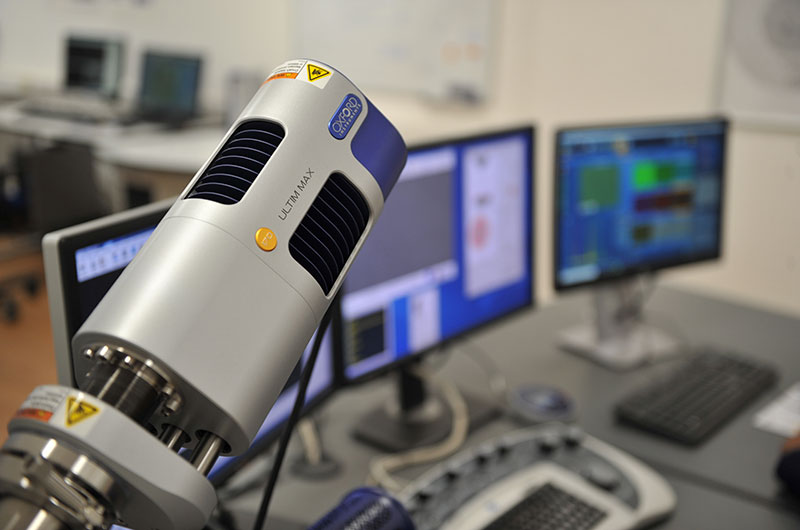Equipment Guide > Scanning Electron Microscopy
Scanning electron microscopy (SEM) is an analysis technique which obtains information about composition and topography of an object by scanning its surface to create a high-resolution image.
SEM uses a focused beam of electrons to do this. The resulting images show information about what the object is made of and its physical features. SEM has a broad range of applications, across several industries and sectors.
- A suite of high resolution Field Emission Scanning Electron Microscopes (FE-SEM) are available
These scanning electron microscopes are complimented with the latest technology, including:
- Wavelength Dispersive Spectroscopy (WDS) and Electron Diffraction Spectroscopy (EDS) detectors offering light element analysis
- Electron Back-scatter Diffraction (EBSD)
- In situ hot stage up to 1400°C
- In-situ tensile stage
- Environmental Scanning Electron Microscopy (ESEM)
Equipment
FEI Quanta 650 w/Scanning Electron Microscope
- Oxford Instruments Ultimax 100 EDS detector
- In-situ 1400°C stage
- ESEM Mode
Zeis Sigma 300 w/Scanning Electron Microscope
- Oxford Instruments Symmetry S2 EBSD
- Oxford Instruments AztecWave WDS & Ultimax 170 EDS detector
- In situ tensile stage
Key Features
- Field Emission Gun SEM provides high resolution, high magnification analysis even at low accelerating voltages
- Light element analysis to Li detection using Wavelength Dispersive Microscopy and Electron Diffraction Spectroscopy
- Electron Back-scatter Diffraction analysis
- In situ hot stage
- In situ tensile stage
Applications and Capability
- Microstructural analysis
- Fracture analysis
- Qualitative and semi-qualitative compositional analysis
- In-situ analysis for microstructural transformations at elevated temperature or under strain conditions
- Environmental scanning electron microscopy (ESEM mode) for non-metallic, non-conductive or biological samples
- In-situ elevated temperature analysis (up to 1400°C)
- In-situ tensile testing



